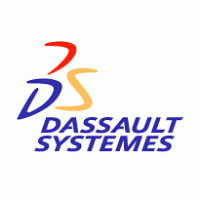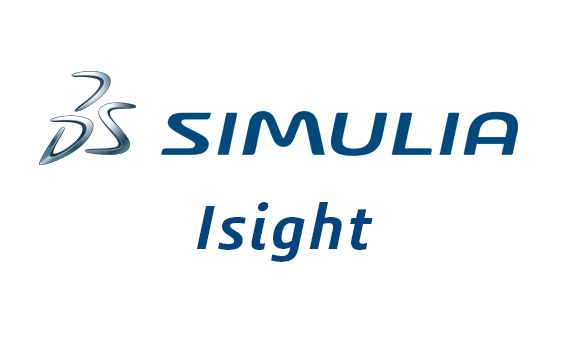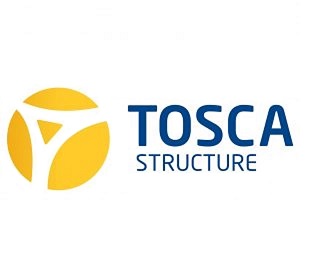
Dassault Systemes has been created in 1981 by Avions Marcel Dassault to develop a new generation of computer-aided design (CAD) software to develop product life cycle management computer software. The Company’s software enables engineers to create a three-dimensional model of a product, simulate its assembly, and test it before building a prototype.
Dassault Systemes, the 3DEXPERIENCE Company, provides business and people with virtual universes to imagine sustainable innovations. Its world-leading solutions transform the way products are designed, produced, and supported. Dassault Systèmes’ collaborative solutions foster social innovation, expanding possibilities for the virtual world to improve the real world. The group brings value to over 220, 000 customers of all sizes, in all industries, in more than 140 countries.
ABAQUS
Today, product simulation is often being performed by engineering groups using niche simulation tools from different vendors to simulate various design attributes. The use of multiple vendor software products creates inefficiencies and increases costs. SIMULIA delivers a scalable suite of unified analysis products that allow all users, regardless of their simulation expertise or domain focus, to collaborate and seamlessly share simulation data and approved methods without loss of information fidelity.
The ABAQUS Unified FEA product suite offers powerful and complete solutions for both routine and sophisticated engineering problems covering a vast spectrum of industrial applications. In the automotive industry engineering work groups are able to consider full vehicle loads, dynamic vibration, multibody systems, impact/crash, nonlinear static, thermal coupling, and acoustic-structural coupling using a common model data structure and integrated solver technology. Best-in-class companies are taking advantage of ABAQUS Unified FEA to consolidate their processes and tools, reduce costs and inefficiencies, and gain a competitive advantage.
ABAQUS delivers on SIMULIAs strategic commitment to provide scalable, high-quality realistic simulation solutions with new capabilities and more than 100 customer-requested enhancements. SIMULIA customers in a wide range of industries “ including aerospace, automotive, consumer packaged goods, energy, and life sciences “ are using ABAQUS to explore the real-world physical behavior of products and materials, in order to improve performance, reliability and safety, while reducing development time and costs.
In brief, ABAQUS is a commercial software package for finite element analysis. The ABAQUS product suite consists of three core products: ABAQUS /Standard, ABAQUS /Explicit and ABAQUS /CAE. ABAQUS /Standard is a general-purpose solver using a traditional implicit integration scheme to solve finite element analyses. ABAQUS /Explicit uses an explicit integration scheme to solve highly nonlinear transient dynamic and quasi-static analyses. ABAQUS /CAE provides an integrated modelling (preprocessing) and visualization (postprocessing) environment for the analysis products.
ABAQUS is used in the automotive, aerospace, and industrial product industries. The product is popular with academic and research institutions due to the wide material modeling capability, and the program’s ability to be customized. ABAQUS also provides a good collection of multiphysics capabilities, such as coupled acoustic-structural, piezoelectric, and structural-pore capabilities, making it attractive for production-level simulations where multiple fields need to be coupled.
ABAQUS was initially designed to address non-linear physical behavior; as a result, the package has an extensive range of material models. Its elastomeric (rubberlike) material capabilities are particularly noteworthy.
ISIGHT
Isight provides designers, engineers, and researchers with an open system for integrating design and simulation models created with various CAD, CAE, and other software applications to automate the execution of hundreds or thousands of simulations. Isight allows users to save time and improve their products by optimizing them against performance or cost metrics through statistical methods, such as Design of Experiments (DOE) or Design for Six Sigma.
Isight combines cross-disciplinary models and applications together in a simulation process flow, automates their execution, explores the resulting design space, and identifies the optimal design parameters based on required constraints.
Isight’s ability to manipulate and map parametric data between process steps and automate multiple simulations greatly improves efficiency, reduces manual errors, and accelerates the evaluation of product design alternatives.
FE-SAFE
Industry is putting increasing pressure on manufacturers to use less material to deliver lightweight but stronger components, lower warranty and recall costs and all in less time. Many companies use advanced finite element analysis to calculate design stresses, but the fatigue analysis is often still done by manually picking stress points for spreadsheet analysis. This is time-consuming and unreliable because it is easy to miss failure locations.
The fe-safe suite of software is world-leading technology for durability analysis from FEA, directly interfacing to all major FEA suites (Abaqus, ANSYS, Nastran (MSC, NEi, NX), Pro/Mechanica) and its capabilities have been developed to meet the most demanding industry applications.
fe-safe was the first commercially available fatigue analysis software to focus on modern multiaxial strain-based fatigue methods and it continues to set the benchmark for fatigue analysis software.
In generall, the fe-safe provides:
- Accurate, reliable multiaxial fatigue analysis, regardless of the complexity of your loadings and model
- Unique, leading-edge technology for the fatigue analysis of elastomers
- The original, patented Verity Structural Stress Method for seam, structural and spot welded joints
- Thermo-mechanical fatigue analysis with unique capabilities for creep-fatigue interaction
TOSCA
The Tosca optimization suite provides fast and powerful structural and flow optimization solutions based on FEA and CFD simulations. Tosca optimization suite consists of two products:
- Tosca Structure is for optimized structural designs
- Tosca Fluid provides optimized fluid flow design concepts
Tosca Structure delivers powerful optimization solutions for design of lightweight, stiff, and durable parts and assemblies within shorter development cycles to maximize performance, minimize material and weight, and discover new design possibilities. Tosca Structure offers functionalities for topology, shape, bead and sizing optimization.
Tosca Fluid enables topology optimization-driven design concepts for fluid flow systems and components. Use its capabilities to create innovative design ideas automatically for a defined flow task and available package space. Tosca Fluid’s unique technology helps you achieve the highest flow performance, quality and eco-efficiency.
XFLOW
In the modern competitive world of product innovation, industries demand the complex simulation of their product’s real-world behavior under extreme conditions; such as vehicles wading, powertrain lubrication and critical flight maneuvers.
XFlow offers particle-based Lattice-Boltzmann technology for high fidelity Computational Fluid Dynamics (CFD) applications as a part of SIMULIA’s Fluids Simulation portfolio.
The state-of-the-art technology of XFlow enables users to address complex CFD workflows involving high frequency transient simulations with real moving geometries, complex multiphase flows, free surface flows and fluid-structure interactions.
Its automatic lattice generation and adaptive refinement capabilities minimize user inputs thereby reducing time and effort in the meshing and pre-processing phase. This enables engineers to focus the majority of their efforts on design iteration and optimization.
With XFlow’s discretization approach, surface complexity is also not a limiting factor. The underlying lattice can be controlled with a small set of parameters; the lattice is tolerant to the quality of the input geometry and adapts to the presence of moving parts.
Advanced rendering capabilities provide realistic visualization to gain deeper insight into flow and thermal performance. XFlow’s unique capabilities enable companies to reduce physical testing while making to make better design decisions faster.
SIMULIA Fluids Simulation is driven by three complimentary technologies that provide customers with scalable fluids simulation to address broad range of real world applications. Dassault Systèmes SIMULIA brand is committed to enhancing and expanding our Fluids Simulation portfolio to provide end-to-end solutions for broad range of Industry Processes on the 3DEXPERIENCE platform.
SOLIDWORKS
SolidWorks is a solid modeler, and utilizes a parametric feature-based approach which was initially developed by PTC (Creo/Pro-Engineer) to create models and assemblies. The software is written on Parasolid-kernel.
Parameters refer to constraints whose values determine the shape or geometry of the model or assembly. Parameters can be either numeric parameters, such as line lengths or circle diameters, or geometric parameters, such as tangent, parallel, concentric, horizontal or vertical, etc. Numeric parameters can be associated with each other through the use of relations, which allows them to capture design intent.
Design intent is how the creator of the part wants it to respond to changes and updates. For example, you would want the hole at the top of a beverage can to stay at the top surface, regardless of the height or size of the can. SolidWorks allows the user to specify that the hole is a feature on the top surface, and will then honor their design intent no matter what height they later assign to the can.
Features refer to the building blocks of the part. They are the shapes and operations that construct the part. Shape-based features typically begin with a 2D or 3D sketch of shapes such as bosses, holes, slots, etc. This shape is then extruded or cut to add or remove material from the part. Operation-based features are not sketch-based, and include features such as fillets, chamfers, shells, applying draft to the faces of a part, etc.
Building a model in SolidWorks usually starts with a 2D sketch (although 3D sketches are available for power users). The sketch consists of geometry such as points, lines, arcs, conics (except the hyperbola), and splines. Dimensions are added to the sketch to define the size and location of the geometry. Relations are used to define attributes such as tangency, parallelism, perpendicularity, and concentricity. The parametric nature of SolidWorks means that the dimensions and relations drive the geometry, not the other way around. The dimensions in the sketch can be controlled independently, or by relationships to other parameters inside or outside of the sketch.
In an assembly, the analog to sketch relations are mates. Just as sketch relations define conditions such as tangency, parallelism, and concentricity with respect to sketch geometry, assembly mates define equivalent relations with respect to the individual parts or components, allowing the easy construction of assemblies. SolidWorks also includes additional advanced mating features such as gear and cam follower mates, which allow modeled gear assemblies to accurately reproduce the rotational movement of an actual gear train.
Finally, drawings can be created either from parts or assemblies. Views are automatically generated from the solid model, and notes, dimensions and tolerances can then be easily added to the drawing as needed. The drawing module includes most paper sizes and standards (ANSI, ISO, DIN, GOST, JIS, BSI and SAC).






